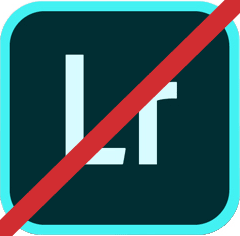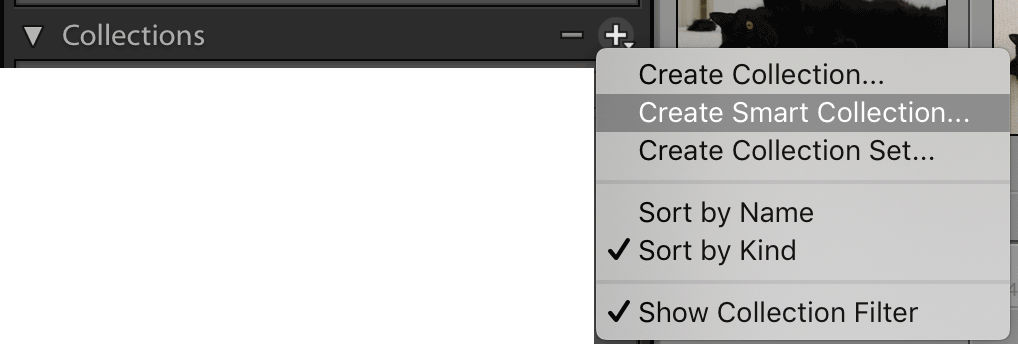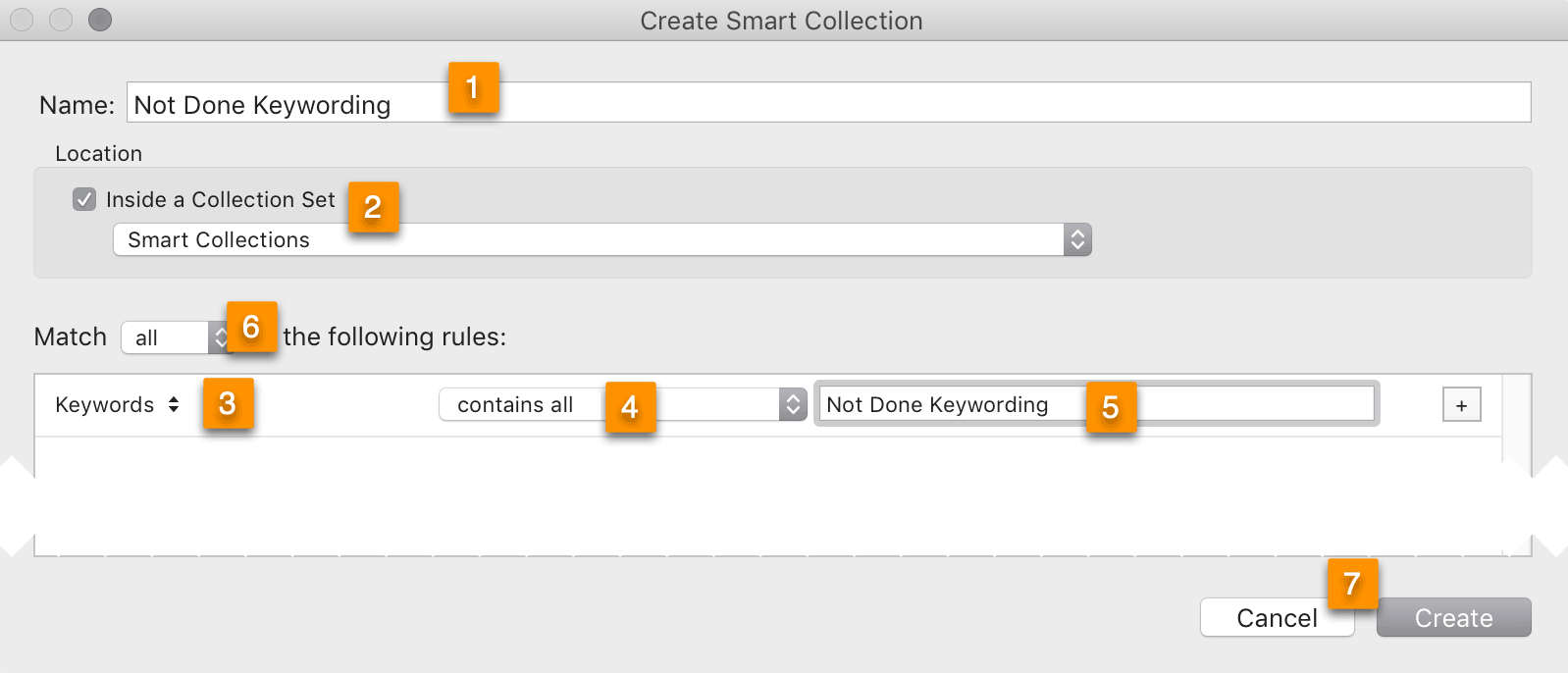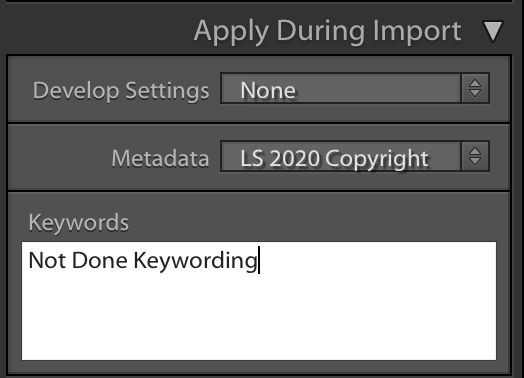 If you have some free time – maybe because you’re stuck at home during the virus outbreak – consider working on keywording photos. Keywording your photos with terms you want to be able to search for them by will allow you to find those photos almost instantly.
If you have some free time – maybe because you’re stuck at home during the virus outbreak – consider working on keywording photos. Keywording your photos with terms you want to be able to search for them by will allow you to find those photos almost instantly.
As an aside, remember, Lightroom Classic users have to keyword in Lightroom Classic on your computer – keywords added in Lightroom Mobile on your tablet or phone won’t transfer to Lightroom Classic.
In this article I’ll explain how to keep track of images you haven’t keyworded yet (or haven’t finished keywording). We’ll use a smart collection, which is a rule-based collection – all images in your catalog that meet the rule(s) for the smart collection are automatically are shown in it. As you finish keywording images, it will be very satisfying to see the number of photos in this collection decrease (hopefully to zero)!

 This content is for Lightroom Classic (AKA Lightroom Classic CC), CC 2015, Lightroom 6 and earlier versions of this Lightroom program that have "Library Develop Map Book Slideshow Print Web" modules listed across the top. It is not for the newer simplified cloud-based Lightroom (AKA Lightroom CC).
This content is for Lightroom Classic (AKA Lightroom Classic CC), CC 2015, Lightroom 6 and earlier versions of this Lightroom program that have "Library Develop Map Book Slideshow Print Web" modules listed across the top. It is not for the newer simplified cloud-based Lightroom (AKA Lightroom CC).Lightroom Classic and earlier versions such as Lightroom 6 come with a Without Keywords smart collection – this identifies images with zero keywords. This is a great starting place, but unfortunately as soon as you assign one keyword (and hit Enter/Return), the image instantly disappears from the smart collection. To assign more keywords to it, you’d then have to go hunting for the image in your folders.
We’ll create a new smart collection that will contain images that we’re not done keywording. Our signal to Lightroom that we’re not done keywording particular images will be that those images have a “Not Done Keywording” keyword. When we finish keywording an image, we’ll remove the keyword. (If you prefer, you could instead use a particular color label, such as yellow, and set up the smart collection with Label = yellow.)
1. Let’s first create the Not Done Keywording Smart Collection:
- In the Collections panel (left side in the Library module below Folders), click on the + to the right of Collections and choose Smart Collection.

- Name it “Not Done Keywording” (or any name you prefer) – #1 in the screenshot below.

- If you’d like to store the collection in a collection set, choose one – it can be the Smart Collections collection set or any other you have created. (Collection sets are folders of collections, used to keep them organized. You can always put the collection in a collection set later.)
- Click on the drop-down next to Rating or whatever field shows in the rule (#3 in the screenshot) and choose Other Metadata>Keywords.
- For the condition (#4), choose Contains All.
- For the value (#5), type Not Done Keywording.
- We just have one rule, so it doesn’t matter what is chosen for Match (#6).
- Save the smart collection (#7).
2. Next, decide what images you want in this smart collection and select that source so we can add the Not Done Keywording keyword to them:
- If your goal is to keyword all images that currently have zero keywords, then find the Without Keywords smart collection in the Smart Collections collection set and click on it. (If you don’t have this smart collection, you can create a new one – use the rule Keywords “Are Empty”.
- If instead your goal is to review all images in your catalog to see if they need additional keywords, then in the Catalog panel above the Folders panel, click on All Photographs.
- If instead you prefer to focus on just a subset of your folders, select them – click on the first, then if they are next to each other, hold down the Shift key and click on the last. If they are not next to each other, click on the first, then hold down Ctl on PC and Cmd on Mac and click on each additional one.
3. Now we’ll select the images and add the keyword to these images:
- Make sure you’re in Grid view (shortcut G)
- Select all images – go to Edit>Select All, or use Ctl/Cmd-A. (Ctl on PC, Cmd on Mac).
- In the Keywording panel, type in the keyword, Not Done Keywording and then hit Enter/Return.
- Deselect all the photos: Edit>Select None or Ctl/Cmd-D, or click in the gray border of one photo to break apart the large selection.
4. Now go to your Not Done Keywording smart collection and begin to keyword these images.
5. When you finish keywording an image, remove the Not Done Keywording keyword from that image so that the image is automatically removed from your smart collection. Here are three ways to do this:
- If you’re in the Keywording box, select and delete it.
- In the Keyword List panel below the Keywording panel, uncheck the keyword.
- Use the shortcut Shift-K to remove it. To set this up, in the menu bar at the top of Lightroom, go to Metadata>Set Keyword Shortcut, and type Not Done Keywording, then click on Set. Shift-K will then remove the Not Done Keywording keyword if it is present, or add it if it’s not.

When you import new images, assign the Not Done Keywording keyword to them so that these images get added to your smart collection. This can be done in the Apply During Import panel in the Import dialog (shown below), or afterwards.

If your goal is to have keywords on all your images, you should never see any images in the Without Keywords collection, since it identifies images with zero keywords – all images should either have the Not Done Keywording keyword assigned, or you should have completed keywording them. If you find images in the Without Keywords collection, select them and add the Not Done Keywording keyword – they then will disappear from Without Keywords and be added to Not Done Keywording.
Related Content
To learn how to add keywords to photos, watch my video, “Three Easy Ways to Keyword in Lightroom“, or for much more information, watch the keywording videos in my Lightroom 5, 6 and Classic CC: The Fundamentals & Beyond video series.


Leave A Comment